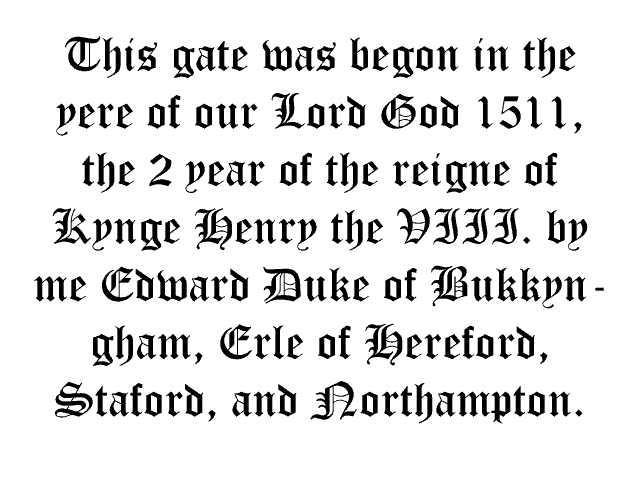Built 1510/11 for the Duke of Buckingham, incorporating parts of a house of circa 1330. In 1521 the Duke was arrested and executed and the building work ceased. Some repairs and alterations were carried out between 1521 and 1554, when the family estates were returned to the Duke’s son. The house then seems to have remained uninhabited until the 1720s. It was partly restored in 1809-11 and more extensively in 1854-5. It is now a hotel. (Pastscape)

There was a very full and accurate survey made of the castle in the reign of Elizabeth (A.D. 1582), printed in Leland’s “Collectanea” (vol. ii. p. 658), and another description, written immediately after the duke’s execution, has been recently found in the Public Records, and is given at length in Parker’s “Domestic Architecture” (vol. ii. p. 264). The gardens and ground and orchards are described, with the singular adjunct of a long gallery or “cloister”, paved with brick, surrounding these gardens, and leading to the parish church of Thornbury, outside which it terminated in a “fair room with a chimney and a window into the said church, where the duke sometimes used to hear service”.
Edward Stafford, Duke of Buckingham, the builder of this beautiful fabric, was the son of Duke Henry, beheaded by Richard III., in 1483, and was fifth in descent from Thomas, sixth and youngest son of Edward III. He inherited from the Bohuns, together with the earldom of Hereford, the office of Lord High Constable of England. Having allowed, as one story has it, some expressions to escape him relative to a shadowy claim which he professed to have to the Crown, in the event of there being no heir to Henry VIII., but according to a more probable version, being a victim to the combined malice of Wolsey and a scoundrel steward, named Knevet, whom he had dismissed, and who accused him falsely of a design against the King’s life, Buckingham was tried at Westminster, found guilty, on false evidence, of high treason, and beheaded on Tower Hill, in 1521. The beginning of Wolsey’s enmity is said to have been thus: It chanced once that the Duke held a basin for the King to wash his hands, when, Henry having completed his ablution, the prelate dipped his fingers into the water. This was more than the proud Duke could endure of the butcher’s son, and he flung the contents of the basin over the red shoes of the Cardinal, who, much incensed, vowed he would “stick to the Duke’s skirts”. It was on hearing of this atrocious murder that the Emperor Charles V. exclaimed, ” A butcher’s dog has killed the finest buck in England”. The office of Constable was never after revived. When this attainder took place, the works at Thornbury were stopped, and the structure has never been completed. It is said that a castle existed in early days near the church of Thornbury, perhaps a Royal residence, but there remain no traces of it.
In 1824. the castle and manor of Thornbury came into the possession of Mr. Harry Howard, father of the present owner (1896), Mr. E. Stafford Howard, who restored the buildings and much improved the property. (Castles Of England, Sir James D. Mackenzie, 1896)
Leave a Reply